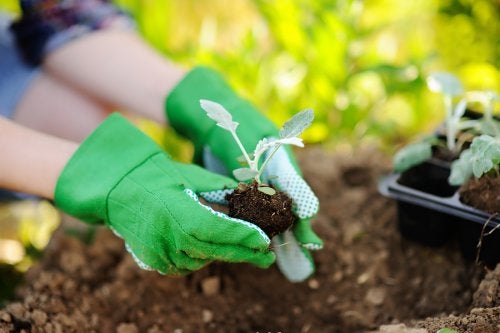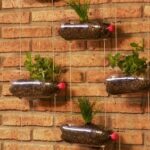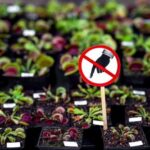Although it is not difficult to transplant a plant, it must be done with the correct procedure so that it preserves all its shine and vigor. Here are some tips to apply to newly purchased plants.

The task of transplanting a plant that we have just bought may seem simple but, in reality, it is not so easy. You need to consider a few things before doing so.
The transplant is something that is not natural for the plants and the change of container means a great waste of energy for them. We have to think that this step is not necessary if they were in their natural habitat.
Transplantation represents an important change for plants, and if it is not done well it can weaken them. In some cases, this weakening affects them greatly and can end them without remedy. Here are some recommendations for transplanting newly purchased plants.
Aspects to consider when transplanting.
The time of year.
To transplant a plant that we just bought, either to the ground or to a pot, it does not matter the time of year. It can be done at any time, as the plant will not suffer much. The transplant can be immediate.
If the transplant is carried out from the ground into a pot, the situation is different. If so, there is damage to the roots so it is necessary to wait until the vegetative activity of the plant is minimal. The best time of year to do it is in winter.
If, on the other hand, the transplant is from a pot to the ground, it is essential to consider irrigation. This is particularly important if the transplant takes place in summer. The plant must be given enough water because otherwise it will dry out very easily.
Choosing the pot to transplant.
One of the most important aspects when transplanting plants is choosing the pot well. Too small a pot will be detrimental to the plant, but too large one too. In the latter case, the plant could receive too much watering, which would end up killing it.
It is necessary to observe the development of the plant and choose a pot that adapts to its evolution, always leaving a few centimeters both in depth and width. In the same way, if it is a plant that is still very small and is going to grow a lot, it is preferable to do two or more transplants depending on the size.
As for the material of the pot, both the clay and the plastic ones have their advantages and disadvantages. Plastic pots have the great advantage of being cheap and very light, so they are easy to transport.
One of the drawbacks is that the sun, over time, can weaken the material and the pot can break. Another problem with plastic pots is that, as it is not a porous material, the root system of the plant can have a difficult time taking root.
Clay pots are very resistant and allow the roots to develop properly. Also from an aesthetic point of view they are undoubtedly much better than plastic ones. Their disadvantage is that they are more expensive and that if they fall or are hit they break.
Plant extraction.
The extraction of the plant is the most delicate part of the transplant, especially if it is being transplanted from one pot to another. It is necessary to remove the plant very carefully so that the base of earth that is around it does not crumble. If this happens, the adaptation of the plant to its new container may be more difficult.
Irrigation is an element that contributes a lot to facilitate this task. Once the soil is well wet, the pot is tapped to help the soil detach from it. Finally the plant is taken by the main stem or the trunk and extracted.
Introduction to the new pot.
To introduce the plant in the new pot it is important to try to make sure that it is well in the center, not too high or too low with respect to the edge. Finally, the pot should be filled with more substrate, exerting pressure with the fist of the hand, so that the soil remains compact.
It is important to prepare the substrate previously, depending on the requirements of each plant. It can be a definitive element for durability over time.


